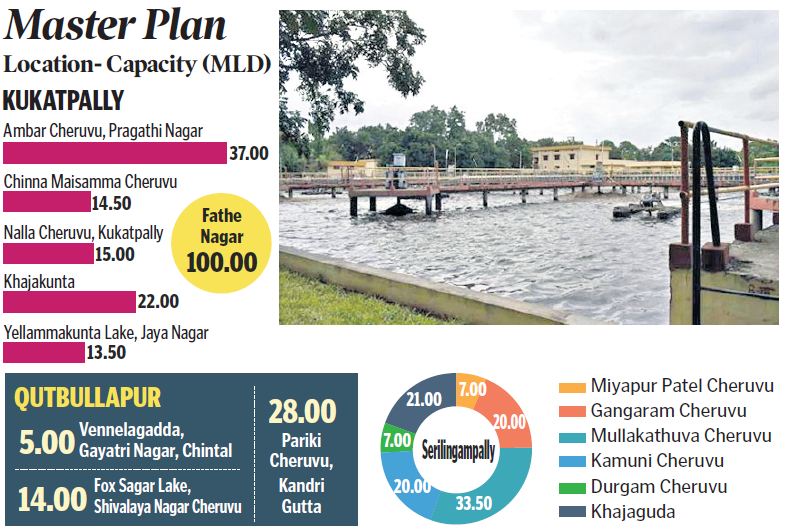Hyderabad: As part of its efforts to ensure the flow of treated water into the Hussain Sagar and to decentralize sewage treatment in the city, the Hyderabad Metropolitan Water Supply and Sewerage Board (HMWSSB) has initiated work on setting up 17 Sewage Treatment Plants (STP) along River Musi and on the Kukatpally Nala catchment with a total treating capacity of 376.5 million litres a day (MLD). The initiative is being taken up as part of the Hussain Sagar catchment development under the sewerage improvement project and Sewerage Master Plan of the Hyderabad Urban Agglomeration area.
Apart from the Banjara, Picket, and Balkapur nalas, the Kukatpally nala is one of the major inflow channels into the Hussain Sagar. About 155 MLD of sewage water flows into the Hussain Sagar through the Kukatpally nala. Along with sewage, a lot of trash, plastic waste and other effluents to flow into the lake through the nala.
Municipal Administration and Urban Development Minister KT Rama Rao had directed the HMWSSB to initiate measures to arrest the flow of sewage and ensure the flow of clean water in the nala. Currently, HWMSSB treats 772 MLD of wastewater through 25 STPs in different areas. While most cities are equipped to treat only 20 to 30 per cent of the sewerage generated, the HMWSSB is treating nearly 43 per cent in the city. In the Greater Hyderabad Municipal Corporation (GHMC) limits, nearly 1,781 MLD of sewage is generated, of which about 772 MLD is treated through the HMWSSB’s STPs, officials said.
The idea is to decentralize the treatment of murky water in the city. At present, the sewage water is treated at Amberpet, Nagole, and other STPs. Under this initiative, HMWSSB is now working on the construction, installation, testing, and commissioning of 17 STPs with a total capacity of 376.5 MLD.
These STPs will be equipped with Sequential Batch Reactors process technology and will come up at various locations. As part of agreements, the entire units will come with a warranty period of two years for equipment and instrumentation from the date of commissioning of the plant, including manning, operation, and maintenance for a period of 15 years. More importantly, the foundation of all the units will be designed in a way to facilitate upliftment in the future as STPs are located near the foreshore of water bodies.






















